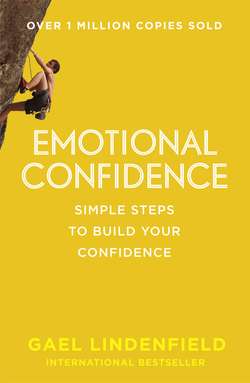Читать книгу Emotional Confidence: Simple Steps to Build Your Confidence - Gael Lindenfield, Gael Lindenfield - Страница 12
Understanding How Feelings Work
ОглавлениеI hate driving. It’s not so much the stress that upsets me as the boredom and, more importantly, my lack of confidence when I am behind the wheel. The main reasons behind these uncomfortable feelings are that a) I know virtually nothing about the workings of the machines I drive and b) I am completely dependent on others to help me out should anything go wrong.
Because I am aware of these limitations, I rarely take the driving seat. When I do, I always restrict myself to routes where I know I can readily get help, and I proceed at a very cautious safe pace.
I bet some of you have started thinking ‘No wonder she gets bored and no wonder she’s such an unconfident driver!’ But I would argue that my car is by no means essential to my health, welfare or happiness, so I am quite content to maintain this level of driving confidence and to remain dependent on the knowledge and skill of others to transport me from A to B.
In contrast, I would never again accept being equally ignorant about the emotional machine within me. I am glad that I have now acquired sufficient knowledge about its inner workings to feel free to drive it wherever and whenever I want. I enjoy being able to ‘rev’ its engine up and down to my heart’s content and still feel competent and in control even when I am driving my feelings at full throttle. Should this particular ‘engine’ break down or show any signs of wear and tear, I know how to repair it myself, quickly and efficiently. Although in a major crisis I might one day be happy to turn to professionals for some extra wisdom and support, I’m certainly glad I no longer have to run to them for every minor emotional wobble.
I am not suggesting that everyone needs my level of emotional knowledge to be able to run their own feelings with confidence. But I do know from my work in the self-help field what a tremendous support it can be to have, at the very least, a DIY level of emotional understanding. In recent years there has been a surge in research findings in this field particularly as a result of the developments of neuroscience and brain imaging. I have found these developments fascinating. Psychologists are now better able to see in colourful imagery the emotional response patterns in the brain. They are also more able to say with some confidence how our genetic inheritance affects them. Interesting as these developments are, my main focus is always on how we can gain better control of our problematic emotions. So each time a new piece of research emerges I do a mental check to see if the findings still fit with the self-help methods I use and write about. So far, so good, is my current conclusion!
So I am still confident that the following summary will provide a helpful background to the self-help exercises and strategies in this book. I have tried to keep the language simple and used everyday examples to bring the theory to life. But it will mean much more to you if as you read, you also do the exercises I suggest. These will make the theory even more memorable and useful as you will be applying it to your own personal experiences.
If later you would like to extend your study further on the workings of our emotions, there are plenty of interesting new books on the subject. But the research is developing so fast that you might be best doing regular checks on the internet for the latest findings.
